Week 12- Location, Location, Location 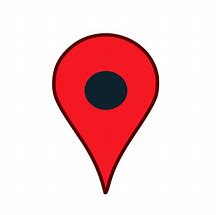 There is one P of the marketing mix we haven’t really touched on yet and that is Place. This comes in two different forms for the Indie author – where to sell your books and where to promote them. We’ll start with where to sell. There are a lot of Indie authors (and other people) who get very snooty about Amazon. Because it is so big and because its owner is so rich, they take a “stand against the man” and won’t trade with them. OK. You’re entitled to your view and I respect it. But let me tell you something. In 2019 Amazon accounted for 47% of all self-published books sold in the world, in all formats. That leaves all the others (Kobo, BookNook, Smashwords, Lulu, et al) dividing up the other 53% between them. No matter what your favourite platform, it is never going to match Amazon in terms of market share. "it is never going to match Amazon in terms of market share" 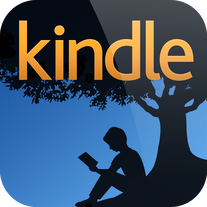 Amazon are shy about revealing details of how many Kindles have been sold, but the estimates are between 20 million and 90 million. Some of those will probably be shared between users. There is no data that I can find on how many times the Kindle app has been downloaded, but it is available to everyone who has a digital device if they fancy reading a Kindle book. That is an estimated 5.2 billion phone handsets and an estimated 1.14 billion tablets. Trust me, Amazon aren’t paying me to tell you these things. I’m just providing the data and you can make your own decisions. Can you really afford not to be on Amazon? Can you really afford not to link your book to Amazon if you are already on there? OK, that’s just going to make Amazon bigger, but it is in the hands of the other retailers to try and compete with Amazon, but right now they aren’t even in the game, let alone inside the stadium and fighting for a win. 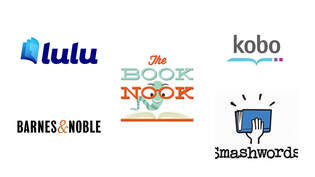 I’m not saying that you shouldn’t be on the other platforms. It makes sense to be everywhere you can, but the most likely place for your book to sell is the Big A. One of the advantages of some of the other platforms is that some of them allow the author to offer coupons and other ways to provide discounts and free books to readers. You can do this on Amazon but it is far harder. For example, we passed a milestone for a number of followers on Twitter, so we Tweeted a Smashwords coupon code for a 100% discount on one of our books that was only valid for 24 hours. We got several downloads (and lots of new Twitter followers) and then a couple of sales from people who missed the cut-off time for the coupon but decided they wanted to read the book anyway. We couldn’t have done that with Amazon. 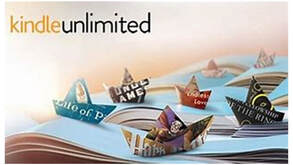 Amazon’s Kindle Unlimited (KU) programme is the biggest subscription service/lending library for Indie books. This puts the Indie author into a bit of a quandary. Because it is part of KDP’s T&Cs that you can’t enrol your eBook on KU if it is published on another platform. Sneaky, I know. So, you now have to try to work out whether you are going to be financially better off by not enrolling in KU and selling through multiple platforms, or whether your sales on other platforms aren’t worth you being there, so it is better to be on KU instead. That’s not always an easy choice to make.
books. That is part of your market research. For example, women are more likely buy Kindles than men – but men are more likely to become permanent Kindle users than women, if they have one. Maybe it is just that women buy the Kindles as gifts for men in the first place, but I have no evidence to back up that supposition. The good news is there’s room for some trial and error. You can enrol your book in KU at any time, so if you aren’t making sales on the other platforms you can de-list the book and enrol it on KU instead. It’s harder to unenroll from KU as you have to wait until the end of a 3 month period and if you miss the date it will auto-enrol you for another 3 months.  Now, which social media platforms are you going to use to reach your target audience? We touched on this in earlier blogs but it is time to take a more in-depth look. The demographics of social media usage varies from platform to platform. Those that are better for visual images, especially video, tend to be more popular with young people. The ones that allow you to “tell a story” in words, like Facebook, are more used by people in the 30 to 50 age group. This is going to affect your choice of platform and your choice of messages. You can be on all of them, of course, but you are going to waste some of your effort by concentrating on the wrong ones. Platform usage also varies from country to country, so here’s some stats:
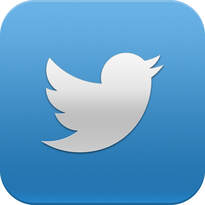 From that you might assume that the UK is all on Twitter. You would be wrong. When you look at the actual number of users it goes FB (38 million), Insta (28 million) then Twitter (17 million) so the place to be seen would appear to be FB. The same applies to the USA (310m, 95m and 68m). What makes it more difficult is that these numbers change every year. Those are the ones for 2020. Who knows where people will be by the end of 2021. But what this means is that if you are targeting a global population for your books, you can analyse data like that and decide which platform is going to be best for you to concentrate on in that country. In both the USA and UK, it is most definitely FB, not Twitter. This becomes even more significant when it comes to spending money on advertising (a topic for a later blog), then clearly you are better off spending your hard-earned cash on FB advertising, not Twitter, because FB can reach more people. "In both the USA and UK, it is most definitely FB, not Twitter. "  Facebook's founder, Mark Zuckerberg Facebook's founder, Mark Zuckerberg Of course, that takes us back into the world of personal politics because a lot of people don’t like Mark Zuckerberg and don’t want to make him any richer than he is. On the other hand, those same people want to sell books. Whatcha gonna do? You can slice and dice the data in a number of other ways. For example, is your target audience college educated? If yes, then more college educated people use Facebook than Twitter. Is your ideal reader a high-income earner? Then Facebook is also the place for you. On all 3 platforms the largest proportion of users is amongst the higher income bracket, but on FB it is a massive 74% of high-income earners. That is to say, of all those users of social media who are high income earners, 74% will use FB but only 31% will use Twitter. "You can slice and dice the data in a number of other ways" Where did all that data come from? It came from this website, to which we provided a link in a previous blog. The data relates mainly to users in the USA, but there is no reason to suggest that the data doesn’t transpose to the UK, especially when you look at that number of users for the different countries that are shown above.  Market research companies allow some of their data to be accessed, which can be helpful. For example, on the Yougov website (registration is free) I discovered that fans of Bernard Cornwell are more likely to be male, over 55, interested in history and politics and follow the news and, when it comes to reading, they want to find a series that “they can dive into for a while”. Now that I know that age bracket, I can find out which social media platform they are most likely to use and target them on that and I know what sort of messages they are going to be interested in reading and engaging with. OK, the amount of data I got from Yougov wasn’t that much, but they make their money by selling data, not giving it away for free. Having registered with them I’ll probably be bombarded with emails inviting me to take out a subscription. I may not need to, because the insights I got from them without paying were high value in terms of audience profiling.  Best-selling author Bernard Cornwell Best-selling author Bernard Cornwell Why Bernard Cornwell? Well, I’m a fan. But I could have got similar data for the readers of authors of any genre of book that we publish. Because their fans are probably the people we want to target for advertising. As you can see this is, again, very time-consuming stuff. If you are juggling family, work and being an author, you haven’t got much time leftover for marketing. Well, I don’t want to pressure you, but you can always find someone who can do some of it for you. Yes we will take a share of your royalties, but a share is better than no royalties at all. In the next edition of this blog we’re going to look at the one place where you may be tempted to spend some money – advertising. Is it something an Indie author should be considering? If you have enjoyed this blog and found it informative, make sure you don't miss future editions by signing up to receive our newsletter. Just click the button.
0 Comments
Week 11 - What Price Fame?  Best-selling author Bernard Cornwell Best-selling author Bernard Cornwell In September this year, Bernard Cornwell is bringing out a new “Sharp” novel and to pre-order it for Kindle will cost you £14.99. So, as a self-published, Indie author, what price should you set for your next masterpiece? Let’s look at the economics of pricing a book. Publishers, even quite small ones, have costs they must cover: rent, utilities, editing, proofreading, marketing, distribution, “back office” staff etc. All of these costs have to be recovered and, to help the company’s balance sheet, they like to recover those costs within the financial year in which the book is published. To keep the shareholders happy, the company also needs to make a profit. "the author needs to make a living" Then the author needs to make a living, so some income for the author has to be factored into the price, which also has to take into account the percentage that will be paid to the author’s agent, anywhere between 10% and 20% of the author’s royalties (the author pays the agent, not the publisher).  Finally, a well-known author like Cornwell has a loyal fanbase who are eagerly awaiting this book and who are prepared to pay top price in order to be amongst the first to read it. You have seen a similar effect with fans queuing to be the first to be the owners of the new iPhone or PlayStation. Put those three things together and you get the price that is being asked for “The New Sharp Novel” as it somewhat bizarrely titled (I suspect that’s just a placeholder until Cornwell decides what the title will be). Once the publisher has recovered their initial costs, usually after a year, they start to reduce the price of the book while maintaining the level of royalties they pay to the author. You can pick up most of Cornwell’s back catalogue as eBooks for around £6.99. The price of the hardback is usually reduced when the paperback is released, perhaps 6 months after launch. Even paperback prices are reduced over time. 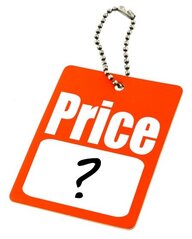 So, how much do you think you should charge for your books? Firstly, you don’t have most of those overheads. You have expended time to write the book and you may have paid for some services, such as editing or cover design, you may also have to pay for some marketing activity, but those costs are miniscule when compared to those of a major publisher. Interestingly you can make the same royalties, per copy, for your book charging quite a modest price as Bernard Cornwell will at £14.99 a pop. The difference in income between you and him is that he will sell hundreds of thousands of copies, but you will probably be doing well to sell a few hundred copies. At least, until you are better known. I don’t know why you got into writing, but if it was to become a millionaire, you are barking up the wrong tree. According to this research, the average annual royalties for an author in the UK in 2018 was a fraction over £16,000. The top 10% of authors earn 70% of all royalties. These are the big, well-known names. A statistician will tell you that it is the top 10% that is keeping the average as high as it is. I’ll just to do the maths for you: if you price your book to pay you £3 per copy in royalties, you have to sell 5,300 copies to make the average annual income – without taking your other costs into account. The mode (that’s statistics jargon meaning what the largest number of authors earn) is much lower than the average. It’s less than £11k, or 3,700 sales. "If you want to make money don't become an author, become a publisher." So, even if you can climb to the dizzy heights of earning the average income for an author, you will struggle to live on it. By comparison, the 2020 UK average wage was a fraction over £30k. It is interesting to note that many of the authors who are signed to mainstream publishers are probably earning less than their editors. They are certainly earning less than the middle ranking managers in the publishing company. If you want to make money don't become an author, become a publisher.  The big money for authors isn’t in selling books; it is in selling the TV and film rights to their books. Not only do they go for a large lump sum (and probably a “percentage of the gross”), they also catapult book sales into the stratosphere. It should be remembered that the first print run for “Harry Potter and the Philosopher’s Stone” (Sorcerer’s Stone in the USA) was only 500 copies, 300 of which went to libraries. It took two years to sell 300,000 copies in the UK. You need to sell around 100,000 copies to make it to the Sunday Times best-sellers list. 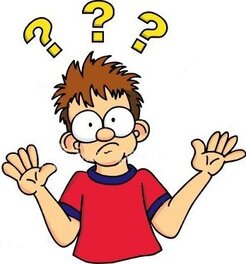 But that hasn’t answered the question: for what price should I sell my book? The answer is, it’s up to you. Some authors believe in setting a low price, hoping to sell more copies. Others set a higher price because they place a higher value on the content. I don’t believe in setting too low a price. I think the readers look at the price and say “If it’s that cheap it can’t be very good” and pass it by. Besides, if you want to drop the price to boost sales, perhaps ahead of the release of a sequel, then you have nowhere to go. "When you sell on Amazon, they set a minimum price" When you sell on Amazon, they set a minimum price (some other platforms also do that). The minimum price is what Amazon thinks they deserve for allowing you to use their platform, which includes delivery via their internet channels. Above that you can sell at whatever price you wish. We set a price of between £2.99 and £4.99 depending on the length of the book. That gives a total royalty between £1 and £3 (approx) per copy. But that is shared 50:50 with the author. 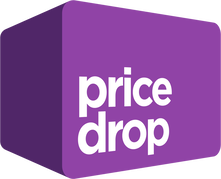 As suggested, there are times when we reduce the price. Amazon will allow us to do that once per title every three months, for up to 5 days per quarter. We will take advantage of that if we want to stimulate interest in a series ahead of the next book being released. Amazon also allows a book to be given away for free using the same parameters and we have also done that. What do the experts say? Well, we came across this article which seems to cover the main points.  Now to Kindle Unlimited (KU), Kindle Select and Kindle Lending Library. These are three names for pretty much the same thing. Readers pay a subscription to these services (they also get it free with their Prime subscription) and the income for that (after Amazon has deducted its fees) is pooled. Every time a reader downloads and reads a book, the author gets a share of the pool. This is currently about 0.5p per standard page (ie standard Kindle sized page) read. So, if your book is 300 pages long and the reader reads it all the way through, you will earn about £1.50. Depending on the sale price, that may be less than if they bought the book. 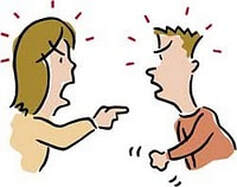 Because of this disparity, there is a difference of opinion about whether to allow your book to be listed on these services (you do have a choice). Part of that is because the big names don’t use these services. But there’s a reason they don’t use them – it takes too long for them to recover their overheads. But Indie authors don’t have that problem. “But if they download my book for free, I won’t make so much money.” is the usual objection. But you will make some money and if they don’t download your book for “free” you don’t make any money. Let me give you an example. If someone sees a film on Amazon they want to watch, but they also subscribe to Netflix, are they going to buy the film from Amazon? No, of course they aren’t. They’re going to download it for “free” from Netflix. The same applies to these other subscription services. The reader may be interested in your book, but if they can’t download it for “free”, they’ll pass it by and find one they can. Just so you know, Amazon’s Kindle Unlimited paid out over $250 million (quarter of a $ billion) to Indie authors in 2019. It currently accounts for 14% of all books read. So, we enrol most of our titles in those programmes, unless the author asks us not to.  By the way, if you are a KU subscriber and you download a book but don’t finish it (for whatever reason), don’t just stop turning the pages. Please keep clicking through until the end. That way the author gets the full share of the pool for that book. It’s a small thing, but it is a good thing to do to help other Indie authors and it costs you nothing. Giving away books for free - other than through the subscription services - is something we are reluctant to do. The thinking is that the free book will raise the author’s profile and the reader will buy other titles by the same author. We have little evidence that, for example, giving away the first book in a series will encourage a new reader to buy the second book. There seems to be plenty of readers who are only interested in free books and will take them, but that is all they do. We don’t even know if they actually read them. It’s a bit like a pub giving away a beer brand for free for a period as a promotion. The drinkers will take the free beer for as long as it lasts, but they won’t necessarily buy it when it’s sold at its normal price. They often go back to their usual tipple.  We do give away one title for free every Christmas as a good will gesture. It’s called “An Alternative Christmas Carol” and it gets a lot of downloads. Strangely, when we take it off free offer after Christmas, we often sell a couple of copies. Bizarre! You can find out more about "An Alternative Christmas Carol" by clicking on the link, but if you want it for free you'll have to come back at Christmas. So, that’s pricing for you. If you think you can sell at a high price – try it, but don’t be surprised if readers don’t buy the book. Better to be modest when you start out (< £5) and increase your prices later when you have established your reputation. One final tip: never make your price a whole number of £s (or other currency). For some reason customers prefer to see .99 at the end of a price. We know - it doesn't make sense to us either, but it makes sense to customers and the customer is King (or Queen). If you have enjoyed this blog and found it interesting, make sure you don't miss out on future editions by signing up to our newsletter. Just click the button. Week 10 - I Hear What You’re Saying  It doesn’t matter how many people you engage with on social media, if the messages you send them aren’t clear, they won’t buy your book. So that is the subject of this week’s blog – coming up with clear marketing messages. There are a number of ways to create content and creative people are coming up with new ways all the time. But we’ll start with the basics and you can get creative yourself once you have got the idea. If you’d like to do some training in this topic, our old friends at Future Learn offer an online course that is (yay) free and you can sign up for it anywhere in the world. We recommend it. For this blog we’re going to look at two specific types of content. 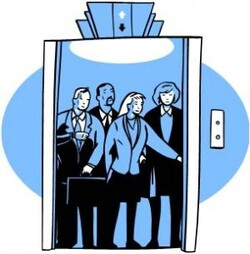 You will recall, all the way back in Week 2 of this blog, I mentioned the “elevator pitch”. I said that it wasn’t much good for approaching an agent, but it did have its uses elsewhere. Well, this is “elsewhere”. If you haven’t read that blog and don’t know what an elevator pitch is, it’s a short description of your book, designed to catch the attention of a potential audience in a very short space of time – typically the duration of a ride in an elevator, hence its name. Elevator pitches aren’t unique to the publishing world. They can be used in any interaction where you need to get an idea across quickly and concisely. Imagine you are at a party and you find yourself in conversation with a stranger. “What do you do for a living?” They ask.  “I’m an author.” you reply (because you are if you want to sell your books, no matter what you actually do to earn a living). “Oh, that’s interesting.” They say, because this is a party and they feel obliged to make small talk. “What sort of books do you write?” “Well, my latest book is …” And you launch into your elevator pitch, which is basically your book’s description in thirty to sixty seconds. Then you pause. If their eyes have glazed over and they change the subject, let it drop – don’t bore them to death with it. But if they say “Oh, that sounds intriguing,” They may ask you more and you can feel free to elaborate until they run away screaming.
there are so many available on the internet already. This is one I found quite quickly. If you don’t like that one, there are plenty more where that came from. But that elevator speech is your basic marketing message for use on social media because it is concise and easy to understand. If you can get it down to 280 characters, then it’s ideal for Twitter, but if you can’t then it can still be used on other social media. 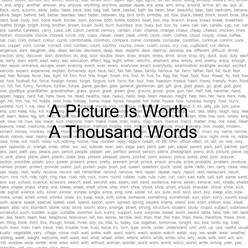 Here’s a trick for Twitter. Turn your message into a picture. Use Powerpoint (other graphics packages are available), put your elevator pitch into a text box, insert the cover image alongside it and save it as a .jpg (image) file. All you need to do then is upload it into your Tweet and add a link so that anyone interested can click through to its retail page on whatever platform you are using for sales. But, of course, you can also use the same “slide” for other social media. But you don’t have to stop there. If you can set up a series of slides you can join them together and make them into a video using packages such as “moviemaker”. Or you can make some actual videos with yourself or family members in them. These are ideal for use on Youtube and Instagram (you could actually video yourself in a party situation, in conversation with a “party guest”). I have what is known as a “good face for radio”, which is a euphemism for being ugly, so I wouldn’t want to be in a video, but there’s nothing wrong with my voice, so I can do a voiceover for a video made up of slides 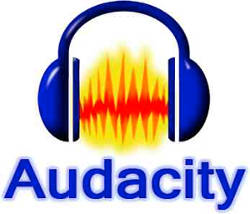 Some music helps and you can find stuff to download for free on this website. You can also find some sound effects there. You may want to edit the soundtrack or music clip, and there is a package called Audacity which can also be downloaded for free. It isn’t easy to use, so be prepared to take some time to learn how. With Audacity you can also create and edit your own podcasts and you can upload them to sites such as Spotify for Podcasters. (other websites for podcasters are available). But if you are going to do a podcast, you are going to need a lot more material than just your elevator pitch.
available on some retail platforms. Your elevator pitch provides the intro, to “hook” the listener and then the extract reels them in. I think you can see that this is all very time consuming, which is why small publishers want 50% of your royalties if you sign with them. If you are a full-time author you may have time to do all this marketing, but if you have a day job and a family to juggle, then it becomes more challenging. But if your books aren’t selling and you aren’t doing some (or all) of this stuff, then that may be one of the reasons. "But if your books aren’t selling .... that may be one of the reasons."  Next, I’m going to take a look at your book’s “blurb”. The blurb is the book’s description that appears beneath the cover image on the retail website and will also appear on the back cover of a hard copy book – or maybe on an inside page. You will find a lot of blogs about writing elevator pitches, but not nearly so many about writing blurbs. That’s because elevator pitches are mainly considered as being a tool to catch an agent’s eye. If you do that, they will find you a publisher and publishers have people who are paid to write blurbs, so the author doesn’t need to know how to do it. But you are here, reading this blog, which means you haven’t got an agent, nor a publisher who employs a blurb writer. So, you need to know how to do this for yourself. Imagine yourself walking along the street and you happen to glance sideways through a window before looking back to where you are going. After a fraction of a second your brain catches up with your feet and says “Hang on, there was something going on in there, but I don’t know what.” Well, that is the elevator pitch. Now you go back and take a proper look through the window and see someone being attacked with an axe. That is the blurb. 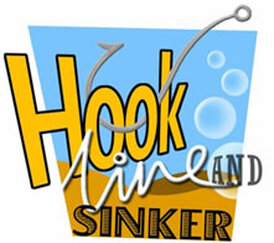 Like the elevator pitch, the blurb has to be concise. If it starts to go on too long the reader will lose interest and move onto another book. But it also has to tell the reader that this is a book that they will enjoy reading, which means it can’t be too short. We found this blog that provides some useful tips. They tie in well with an approach using a fishing metaphor: hook, line and sinker (it’s also the titles of the books in a trilogy by Len Deighton, but that’s another story - sorry, pun intended).  The hook is a short, snappy statement designed to catch the eye, just like the hook catches the fish (that would make the elevator pitch the “bait”). This is the sort of thing we mean: “When you’re up to your backside in alligators, it’s hard to remember that the object of the exercise was to drain the swamp.” That sort of sentence excites all sorts of questions, not least, “what does it mean?”. Thinking about your own book, what sort of short, snappy sentence or couple of sentences could you come up with that would catch the eye? Typical romance ones usually focus on unrequited love. Crime thrillers mention the bizarre nature of a murder. The hook for one of our author’s books, Operation Absolom, is “There’s an old saying in the Army, ‘Never volunteer for anything’. It has been said many times, so why on Earth did Steven Carter ignore it?” Straight away you get two things from that: The book has something to do with the Army, and also the main character’s name. But he obviously volunteers for something that he later regrets – but what is it? If you have to find out what he volunteered for, you are "hooked".  The “line” is where you flesh out the plot and characters for the reader. It will be about a paragraph in length, saying enough to keep the interest going, but not so much that you are giving the book away for free. That’s why it needs to be limited a to a paragraph in length – probably no more than 100 words. Returning to Operation Absolom, here’s the “line” we used: “After volunteering for the Army Commandos, Carter finds himself cut off in enemy occupied Norway. It’s winter, it’s cold and the enemy is hunting for him. Can he survive against all these odds? Even if the Nazis don’t capture him, can he find a way back to England?” So, now we know what Carter volunteered for and why he may now be regretting it. We are also setting up the background against which the story is told – Nazi occupied Norway. Finally, we are asking a “cliff-hanger” question – will the hero escape? If the reader wants the answer to that question, they know what they have to do. 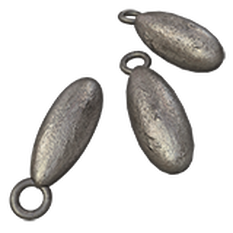 People like to read books similar to the ones they have already read and enjoyed. It is a comfort to them – even if it is frustrating for new authors. So, if you can compare your book to well-known books that the reader may have enjoyed, it tells the reader that they might enjoy this one as well. So, the “sinker” is “If you enjoy the stories of (inset well-known author’s name) and (insert another well-known author’s name) then you will love (insert book title) by (insert author’s name). You can jazz that final paragraph up a bit more if you want, by saying things like “tenser than …. more dramatic than …. more tear jerking than ….” etc. But you don’t have to name authors. You can just use a well-known title or even a film or TV series. Our blurb for “The Deputy Prime Minister” compares it to “House of Cards” and “The West Wing”. Amazon, who know a bit about book marketing, suggest a word count of about 150 for a blurb. That’s only a target, of course, but it gives you something to aim for.  The whole idea of the blurb is to encourage the reader to “look inside” ie start reading the book, just as they might if they were standing in a bookshop with the book in their hand. If you succeed you have a better than 50:50 chance of the reader buying the book. Let’s face it, if you have got the reader this far, the only reason for not buying the book is that, based on the ‘look inside’, they don’t like it or they think it is poorly written. Which is the other main reason your book may not be selling. It doesn’t matter how much marketing you do, if the reader doesn’t like that ‘look inside’ bit, they aren’t going to buy your book. But that is for you to reflect on.
you want, but it’s not so easy to refresh your blurb. Basically you have to republish your book, so taking your time to work on your blurb is time well spent. Why not try it out on your beta readers as well? Send them two or three versions and see which one they prefer. They might even be able to suggest improvements.
Like your elevator pitch, your blurb can be used on social media. It is quite well suited for Facebook, for example, with a link to the book’s retail page so the reader can ‘look inside’, or perhaps to a website where they can get a free extract, as discussed in last week’s blog. Your blurb can be turned into a video and used as the introduction to an extract in a podcast. If you know how to do it, you could even produce an animation. The limit is your own imaginations and skills – and how much you are willing to spend on software packages. We would advise keeping things simple (and free) to start with, then perhaps re-investing some of your royalties later, once you have sold some books. Talking about selling, what should be the price of your book? That’s what we take a look at next week. If you have enjoyed this blog and found it informative and you don't want to miss an edition, make sure you sign up for our newsletter. Just click the button below. Week 9 - Timing Is Everything  Imagine, if you will, that you are a British author, but for reasons we won’t go into, you are living in Australia. Your books are aimed at a British audience mainly. Australians may read them as well (you hope they do), but when you were sitting writing your book, you had visions of busy London streets, leafy Surrey lanes or majestic Scottish glens. Q. You want to use social media to tell your British readers about your new book. When is the best time for you to post on social media? A. When your audience is awake and using social media, of course. Ah, but you are in Australia, which means that when your audience is awake, you are asleep and vice versa. That is going to present a problem. But that is an extreme example. There are, however, many different times when different people are online and knowing when your audience is online is critical to your social media marketing campaign. 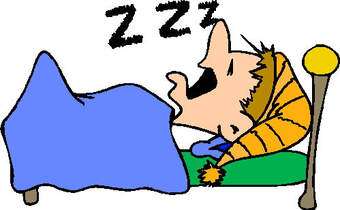 Nurses, who work shifts, don’t get much time for social media while they’re at work, so they use social media when they finish their shift, which could be midnight, 6 a.m. or the middle of the day. But if your target audience includes nurses, you will want to be posting to social media at the time they are using it. Think about it – when do toy manufacturers advertise their toys? When they know children will be watching TV. Yes, we know that it’s the adults who buy the toys, but it’s the kids who pester the life out of the parents to buy them.
sporting events, of course – but also when people are getting back from the pub after having one drink too many and not wanting to go to bed just yet (ah, the good old days). The timing of your messages has to be just as targeted. It’s no good knowing who your target audience is and what they are interested in, if you are in bed when they are on social media. There is a myriad of information on the internet that can help you to identify the best times of day to use different social media platforms and even what days are best and which are worst (Saturday isn’t a good day for Twitter, apparently).  You’ll have to do some digging (Well, you didn’t think we were going to do it all for you, did you?) OK, we’ll help a bit. This website shows what times to post in generic terms, but doesn’t give you much insight into such things as age, employment, gender etc. There are plenty of blogs on the subject on that website, dig around a bit and you should find what you are looking for. Here’s a couple of facts for you. A post on Facebook is most read during the first 1½ hours after posting. After that the number of people who will see it starts to dwindle towards zero. 75% of the people who will see it, will view it in the first 5 hours after posting.
minutes. Yes, 24 minutes after you post your Tweet, fewer and fewer people will see it. On Twitter, 75% coverage is achieved after 3 hours. That’s why timing is so important. 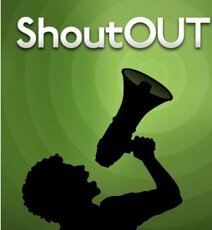 These statistics are vital for engagement. If you want to stay engaged, you have to be there when people see and respond to your post, especially on Twitter. If you go back the next day, or even later the same day, the world has moved on already. That’s why you have to be careful of claims such as “We have a gazillion followers to whom you can Tweet”. Very few of that gazillion will ever actually see your Tweet. A portion (of unknown size) of that gazillion followers will actually see it and out of that portion, 75% of them will see it in the first 3 hours after posting. That could mean that only ten people from your target audience will actually see it. The rest of the gazillion just aren't interested or will never see the post. "to keep your marketing message “fresh” on social media, you have to keep posting at regular intervals" If your head is starting to hurt, we don’t blame you. Ours is hurting too. What that all means, however, is that to keep your marketing message “fresh” on social media, you have to keep posting at regular intervals. But that means that you have to interrupt your work, sleep, leisure time, etc to keep on posting. 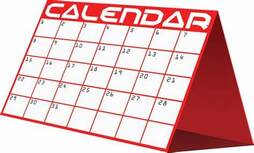 Fortunately help is at hand. There are websites that will allow you to set up and schedule posts in advance. When the clock ticks over to the appointed time, your post will magically appear on your chosen platform while you continue to snore your head off, or play golf or complete the monthly report on the snail population of the Galapagos Islands, or whatever it is you are usually doing at that time. Unfortunately, most of these websites charge for their services. This one, Hootsuite, does offer you a 30 day free trial so you can see if it is right for you and they also offer a free package with limited functionality. But the big advantage of sites like this is that you can sit down for a couple of hours once a week to schedule all your posts to that one platform in one go, then get on with the rest of your week without having to worry about them. If you have Facebook business page, which is different from a personal page, you can schedule posts for free. Look under the "publishing tools" menu for more information. You can also schedule Tweets. It's one of the little row of icons underneath where you insert your message (the one on the right with the calendar symbol and the little clock). Hootsuite and the other sceduling apps are quite picky about you sending out identical messages time after time, but that’s because of the rules governing spam. We like to post in the afternoon and again in the evening, so when we duplicate a post, we schedule it for the evening of the next day, rather than for the same day. That seems to get past the problem, but you may have to edit the message if it is specific to a single day - or limit it to one posting. 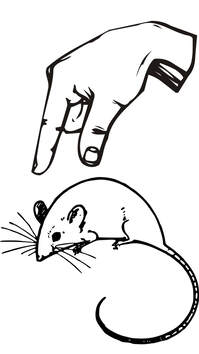 This blog is posted at midnight every Friday night, but do you imagine we spend our Friday nights with our fingers hovering over the mouse, waiting to click on it? We do not. Our website has the facility to schedule our blog posts. When this went live, I was probably deep in the arms of Morpheus or, at least, draining the dregs from a bottle of wine. So, our big messages this week are:
We have talked a lot about “engagement” with your audience, but we haven’t talked much about what actual messages to send them, so that’s where we will start next week. We hope you have enjoyed this blog and found it informative. Please feel free to take a look around the rest of the site to see what we have to offer. And if you want to make sure you don't miss a future edition of the blog, click the button to sign up to our newsletter. |
AuthorThis blog is compiled and curated by the Selfishgenie publishing team. Archives
June 2025
|
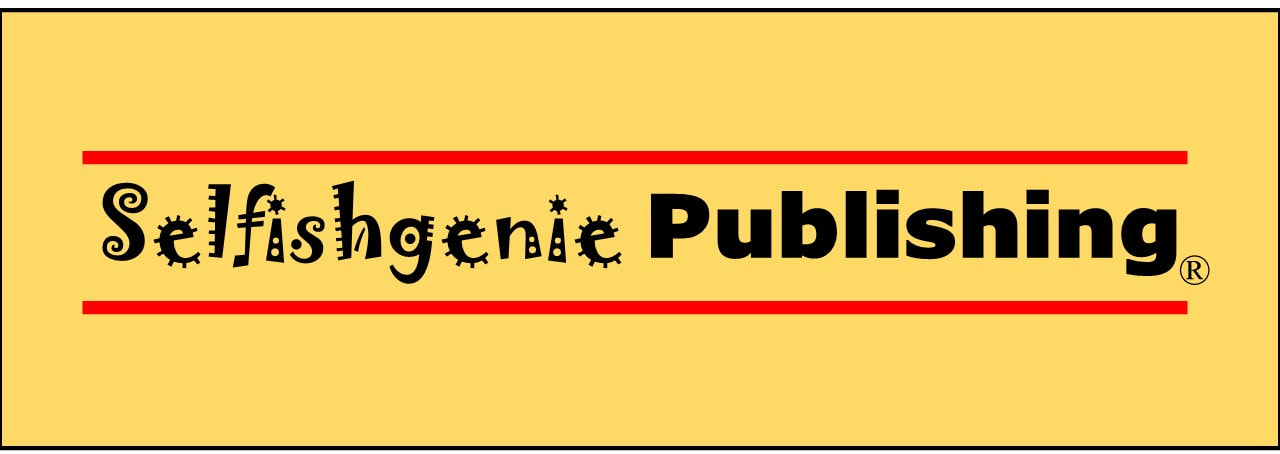
 RSS Feed
RSS Feed